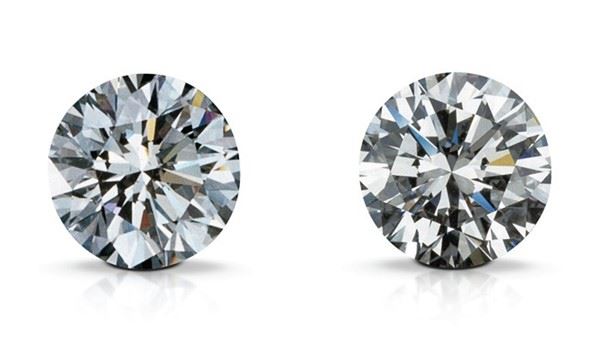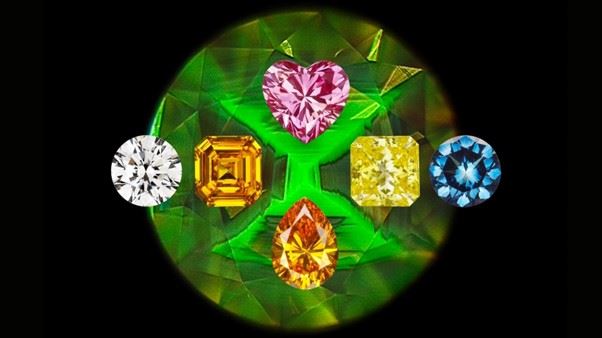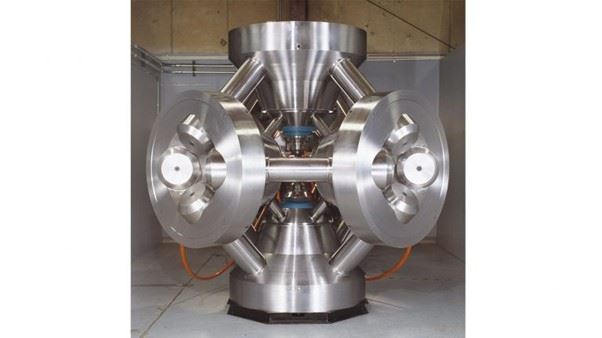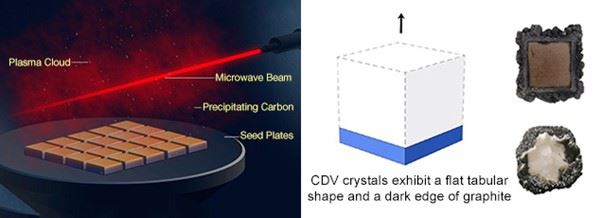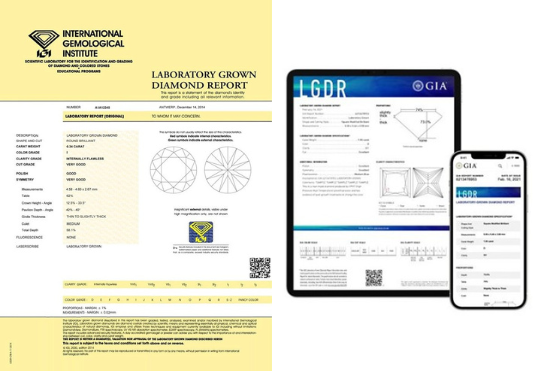LABORATORY-GROWN DIAMONDS
What is a Laboratory-Grown Diamond? Laboratory-grown diamonds are, as their name describes, grown in a laboratory under conditions which mimic the way natural diamonds are formed below the Earth’s surface. The process for growing a laboratory-grown diamond is sped up in a laboratory, with the end result being the same physical properties and structural composition as a natural diamond, irrespective of the method of growth. The laboratory-grown diamond (left) and naturally grown diamond (right) cannot be told apart using the unaided eye. Image: GIA |
|
Acceptable Terminology
The JAA Jewellery Industry Code of Conduct, which all JAA members agree to abide by as part of JAA membership, states synthetic diamonds are to be described as:
i. The word “synthetic” followed by the type of gemstone, e.g. “Synthetic Emerald”; or
ii. The words “lab-created”, “laboratory-created”, “laboratory-grown” or “lab-grown” followed by the type of gemstone, e.g. “Laboratory-Grown Diamond”; or
iii. The name of the manufacturing laboratory can be added to the description, e.g. “Gilson Laboratory-Created Emerald”.
The JAA encourages all industry participants to use this terminology.
How are Laboratory-Grown Diamonds produced? There are two different types of laboratory-grown diamonds. High pressure, high temperature (HPHT) Image 1: These diamonds were all grown using the HPHT method. The background shows a DiamondView image of a laboratory-grown diamond with a cross-shaped fluorescence pattern, a well-known diagnostic feature of HPHT diamonds. Photo courtesy of the GIA Image 2: Shown here is a HPHT press, used to create diamonds. It approximates the high pressure, high temperature environment that natural diamonds experience within the earth. Photo courtesy of the GIA and Suncrest Diamonds. Chemical Vapour Dispositions Image 3: In CVD synthesis, microwaves split apart the hydrocarbon molecules fed into the reactor (left). These fragments migrate down to the colder diamond seed and attach to the growing diamond surface. The synthetic diamond grows in thin layers, and its final thickness depends on the amount of time allowed for growth. This results in flat, tabular crystals (centre and right) with exteriors coated in black graphite. Illustrations: Peter Johnston/GIA |
|
Laboratory-Grown Diamonds versus Natural grown diamonds The laboratory process of creating a laboratory-grown diamond simulates the Earth’s naturally occurring phenomena. Just like natural diamonds, no two laboratory produced stones are alike. For this reason, the grading of laboratory-grown diamonds follows the same criteria as mined diamonds. Carat: As with earth mined diamonds, laboratory-grown diamonds also fluctuate in size (carat weight). This is mainly due to the similarity of conditions that the laboratory-grown diamonds are created in. Colour/Clarity: Colour is variable, as with natural diamonds. Ranging from D-M in colour, Champagne to Brown, Pink, Yellow, Blue etc. In terms of clarity, one could find all sorts of inclusions that gemmologists, jewellers and diamond merchants have been accustomed to finding in natural diamonds for centuries. Cut: Each and every laboratory-grown diamond is cut into an ideal diamond shape. It is in the cut of a diamond, which is how we establish perfection, polish and symmetry, regardless of natural or laboratory-grown. Image: Examples of Laboratory-grown Diamond Certification |
|
Price Comparison Laboratory-grown diamonds are a cost-effective alternative to a natural diamond. This may mean a higher quality, larger stone within your budget. CIBJO, the International Jewellery Confederation, advises there is no intrinsic resale value of laboratory-grown diamonds. Disclosure It is imperative that when buying laboratory-grown diamonds the seller clearly stipulates the known facts and ensures that this information is disclosed to the consumer. |
Privacy + Refunds Policy | Media Policy | Site Map | Terms | Contact | © Copyright 2025 |
The Jewellers Association of Australia acknowledge the Traditional Owners of the land where we work and live. We pay our respects to Elders past, present and emerging.
We celebrate the stories, culture and traditions of Aboriginal and Torres Strait Islander Elders of all communities who also work and live on this land.

